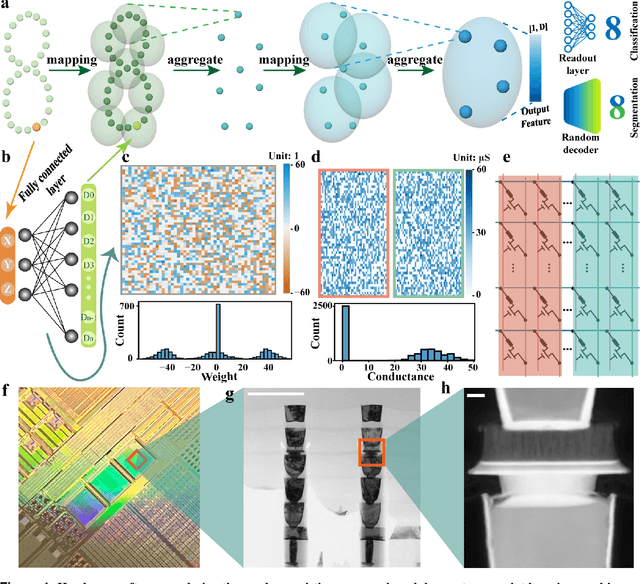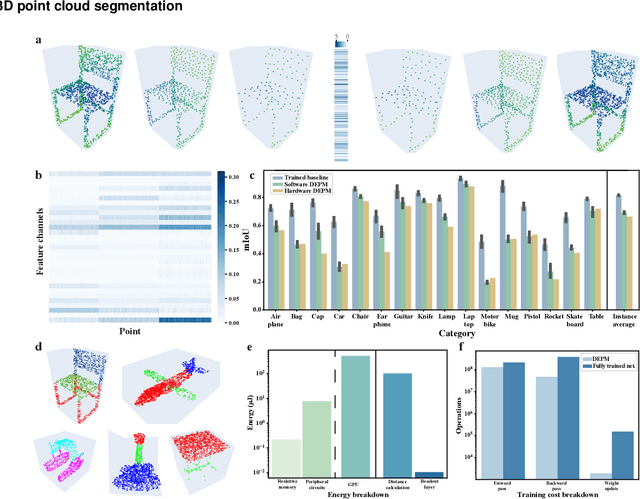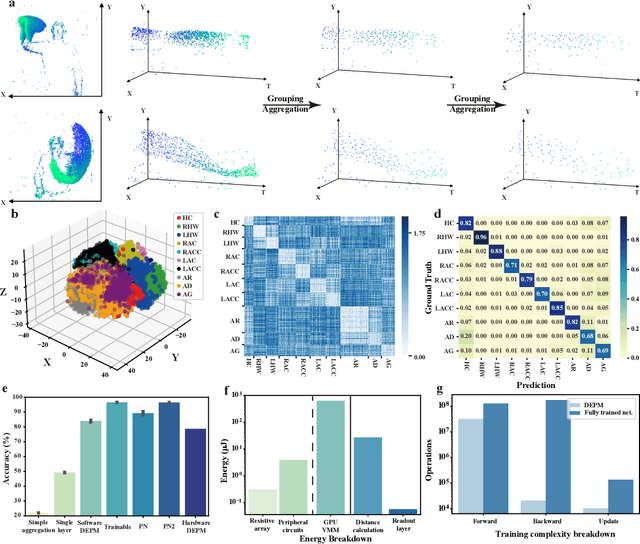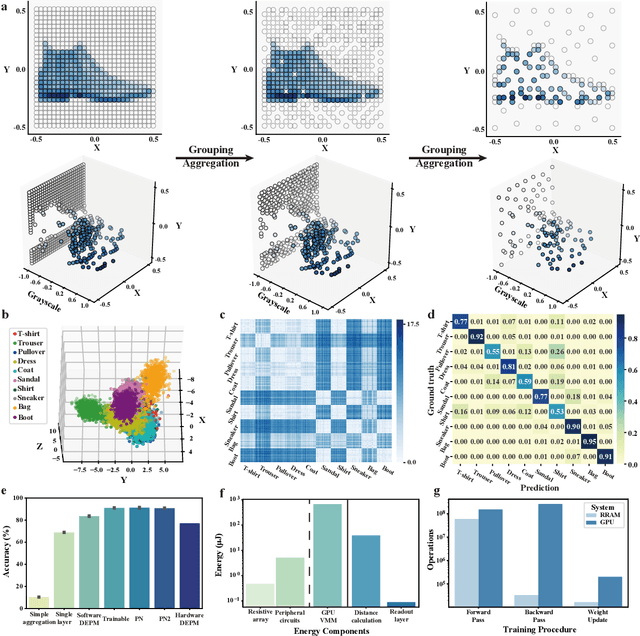Random resistive memory-based deep extreme point learning machine for unified visual processing
Paper and Code
Dec 14, 2023



Visual sensors, including 3D LiDAR, neuromorphic DVS sensors, and conventional frame cameras, are increasingly integrated into edge-side intelligent machines. Realizing intensive multi-sensory data analysis directly on edge intelligent machines is crucial for numerous emerging edge applications, such as augmented and virtual reality and unmanned aerial vehicles, which necessitates unified data representation, unprecedented hardware energy efficiency and rapid model training. However, multi-sensory data are intrinsically heterogeneous, causing significant complexity in the system development for edge-side intelligent machines. In addition, the performance of conventional digital hardware is limited by the physically separated processing and memory units, known as the von Neumann bottleneck, and the physical limit of transistor scaling, which contributes to the slowdown of Moore's law. These limitations are further intensified by the tedious training of models with ever-increasing sizes. We propose a novel hardware-software co-design, random resistive memory-based deep extreme point learning machine (DEPLM), that offers efficient unified point set analysis. We show the system's versatility across various data modalities and two different learning tasks. Compared to a conventional digital hardware-based system, our co-design system achieves huge energy efficiency improvements and training cost reduction when compared to conventional systems. Our random resistive memory-based deep extreme point learning machine may pave the way for energy-efficient and training-friendly edge AI across various data modalities and tasks.
 Add to Chrome
Add to Chrome Add to Firefox
Add to Firefox Add to Edge
Add to Edge